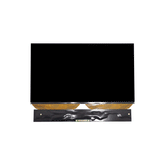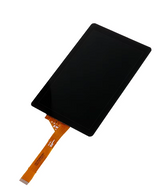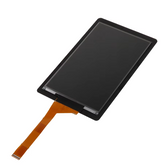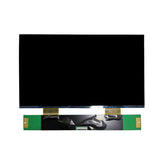Revolutionizing Prosthetic Eyes with 3D Printing Technology
Revolutionizing Prosthetic Eyes: The Power of 3D Printing
In a groundbreaking study, researchers have demonstrated that 3D printing technology can now be used to produce highly realistic prosthetic eyes, significantly reducing the production time compared to traditional methods. This promising advancement could potentially aid 8 million people worldwide who either have congenital eye defects or have lost an eye and require a prosthetic replacement.

△ In this new study, 10 patients received 3D-printed prosthetic eyes, with 8 of the patients shown in the image above. In images (a) and (e), the patients lost their left eyes, so the prosthetic eyes are on the right side of the images. In the remaining images, the patients lost their right eyes, so the prosthetic eyes are on the left side.
Traditionally, crafting a prosthetic eye is a labor-intensive process that can take a skilled technician or an ophthalmologist up to eight hours to complete. However, the new 3D printing technique can produce a prosthetic eye in just 90 minutes, reducing the required labor by fivefold.

△ The study has been published in the journal "Nature Communications," titled "Automated Data-Driven Design and 3D Printing of Customized Prosthetic Eyes."
Johann Reinhard, a researcher at the Fraunhofer Institute for Computer Graphics Research in Germany and the lead author of the study, highlighted the importance of the prosthetic's realism for patients. "Patients are particularly concerned about wearing prosthetics because they don't want to attract attention. These more realistic eyes could help them engage more in social activities," he noted, emphasizing that the technology aims to provide patients with more comfortable and lifelike prosthetics, thereby boosting their confidence and social participation.

Prosthetic eyes are usually placed between the eyelids and the "orbital implant" located within the eye socket.
Further Research on 3D Printed Prosthetic Eyes
To date, this method has been successfully applied to over 200 adult patients at Moorfields Eye Hospital (MEH) in London, including 10 detailed in the new study. The traditional method involves using a soft molding material to create a mold of the patient's eye socket, which is then used to create a wax model. This model undergoes smoothing, testing, and reshaping until it fits comfortably, after which a plastic version is produced and hand-painted to match the patient's healthy eye.
This process, however, means that prosthetic eyes typically need to be replaced every five to ten years, partly due to the wear and tear on the plastic. Since it's a manual process, subsequent prosthetics for the same individual may vary slightly in appearance and shape.

△ Data-driven design software process for creating 3D printed prosthetic eye models
In contrast, the new 3D printing method involves taking specialized images of the patient's empty eye socket and healthy eye, processing these images to draft blueprints, and then sending them to a lab for 3D printing. Reinhard mentioned that the printing process typically takes about 90 minutes, but can be expedited if multiple eyes are printed simultaneously — for instance, 100 prosthetic eyes can be printed in just 10 hours.
These 3D printed eyes can closely replicate the color, size, and structure of a patient's healthy eye, especially excelling at capturing the colored part (iris) and the white part (sclera) of the eye. Installation by an ophthalmologist takes only 15 to 30 minutes.
The research team suggests that theoretically, about 80% of adults in need of a prosthetic eye could benefit from this method. However, it's not suitable for all patients, such as those with highly complex eye sockets, where the software may not find a matching shape for the prosthetic. Additionally, more data is needed to determine if this technology can also be used for children, which requires further regulation.
Looking forward, the team plans to test this method in more clinics and hopes to publish the results of a clinical trial later this year. This trial will examine the long-term performance of these 3D printed eyes in 40 MEH patients and compare them to traditionally made prosthetics, potentially setting a new standard in prosthetic eye production.











Leave a comment
Please note, comments need to be approved before they are published.